Table of contents
- PS knowledge tuning tips What makes sense, where are the limits?
- Harmony between driver and vehicle
- Not for normal drivers
- “Invest money in smart tires”
- Electronics is a tuning story of its own
- Motor tuning comes at the very end
- It’s about tenths or hundredths
- Tips on brakes, exhaust, oil and tires
- Tuning development
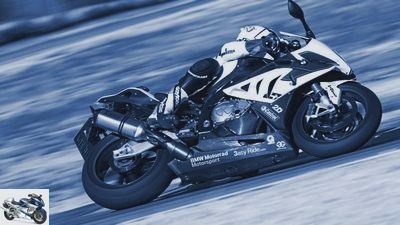
jkuenstle.de
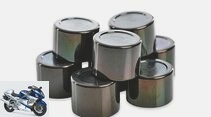
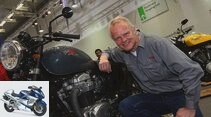
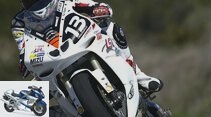
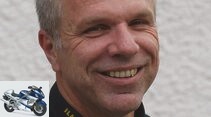
15th pictures
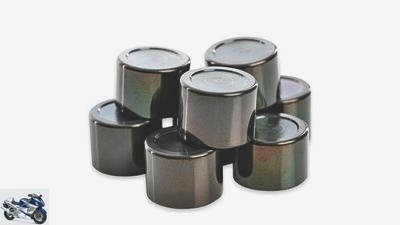
manufacturer
1/15
There are many wearing parts in a brake system. First and foremost, these are the pads, brake fluid and the discs. The wear and tear on the linings causes dust that is deposited all over the calipers, hindering the movement of the brake pistons and thus changing the pressure point.
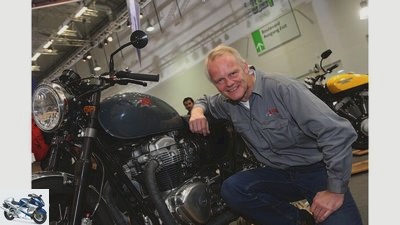
Jahn
2/15
Jochen Schmitz-Linkweiler sees the sense of his involvement in racing in the long distance in particular.
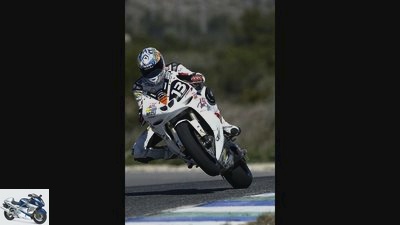
archive
3/15
Handlebars and footrests are direct results of LSL endurance activities, whose experience also ends up in tuning parts for completely different models such as Cafe Racer.
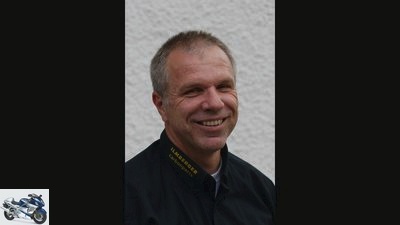
Ilmberger
4/15
“I’m a passionate motorcycle racer myself, and my company’s roots are right there – I can’t imagine it without this sport,” says Ilmberger.
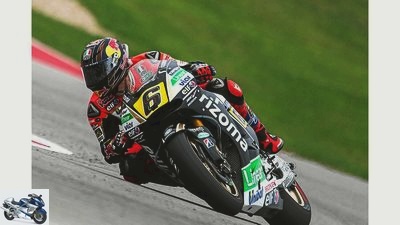
2snap
5/15
A passionate racing athlete himself, Julius Ilmberger also supports MotoGP star Stefan Bradl with his company. In addition to tangible results, there is also a lot of emotion in his commitment.
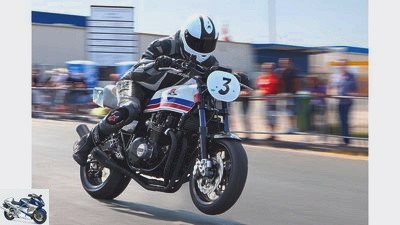
LSL
6/15
“The experience from racing is invaluable for product development, because nowhere is the material and construction exposed to more severe stresses than in racing,” says Robert Schon from Gilles Tooling.
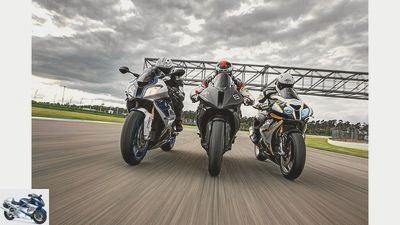
www.jkuenstle.de
7/15
It never hurts to take the time to talk to different tuners and finally to choose the one who will trust rider and bike with the individual steps.
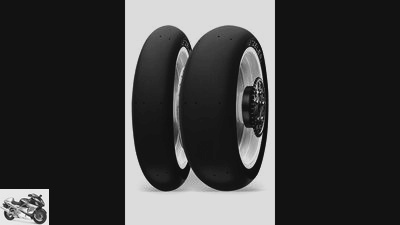
manufacturer
8/15
Choosing the right rubber is a must before every tuning step – on the road as well as on the racetrack. Often OE tires, as the skins applied by the manufacturer to new vehicles are called, are an inexpensive variant with special specifications that do not exactly contribute to good handling or even grip level.
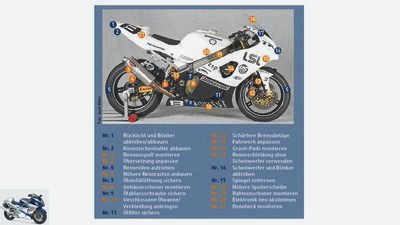
Bilski, PS
9/15
If you want to drive your own motorcycle on a racetrack, you have to prepare it for it. Certain security-relevant changes are mandatory and marked in blue in the picture. The list of other possible modifications (orange) is almost endless.
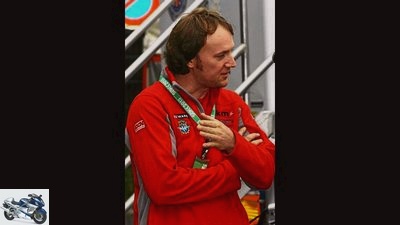
archive
10/15
SKM boss Frank Krekeler: “Before the big tuning, simple measures like good tires and oils are usually more effective.”

11/15
Jens Hainbach from Alpha Racing: “Not everyone can move 230 hp at 180 kg faster than a serial athlete. Tuning just has to make sense. “

www.jkuenstle.de
12/15
High-quality oils, which are changed regularly, not only ensure the longevity of one
Motors in general. Anyone who is sporty, demands a lot from their drive and even squeezes it out properly on the racetrack, should invest in the right oil before adventurous tuning measures.
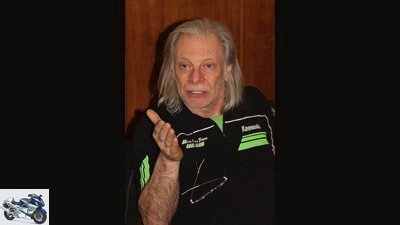
Hertler
13/15
VDMT chairman Michael Lohmann: “A perfectly functioning chassis usually brings more than 20 hp plus in the engine – we know that from the iDM.”
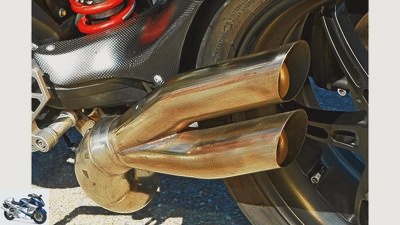
Bilski
14/15
If the bulky standard exhaust torpedoes the face of your bike and if you look at an accessory, you face two problems: noise regulations and emission standards. Those who violate it on public roads now risk hefty fines.
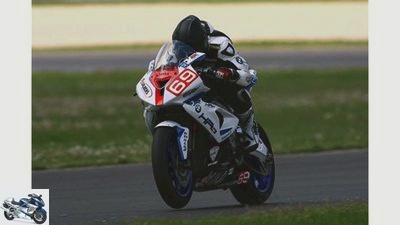
archive
15/15
Wilbers suspension tested and refined in the by Benny Wilbers (picture) from Nordhorn
Superbike * IDM the new technology of electronic chassis for all types of motorcycle.
counselor
workshop
PS knowledge tuning tips
PS knowledge tuning tips
What makes sense, where are the limits?
Content of
In principle, there are no limits to tuning. However, the sense of renovation work does. This is not always due to the legislature, because tuning primarily has to do with the driver.
Uwe Seitz
05/20/2014
The term tuning clearly comes from English and literally means something like “adjust”. Exactly this meaning leads to the most important question that arises before every tuning: Adjust to what? All considerations relating to the look of the motorcycle can be cut short – especially when it comes to the road. In this case, tuning stands for adjusting to the taste. The only measure here is the vehicle owner’s chic. For real? Not quite, because the StvZO (Road Traffic Licensing Regulations) is not only very restrictive when it comes to increasing the performance or manipulating the volume of series vehicles. Even with add-on parts such as levers, indicators or notches, excessive growth is stopped. That is why when you “beautify” the bike you should pay attention to parts with ABE and find out exactly where such a general operating permit may not be required.
Buy complete article
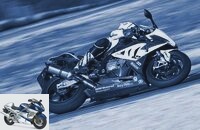
PS knowledge tuning tips
What makes sense, where are the limits?
8 pages) as PDF
€ 2.00
Buy now
However, when it comes to optics tuning, it is important to remember that a lot of things are pretty in the eye of the beholder, but therefore not necessarily functional. Anyone who likes wild street fighters with Mad Max or Alien bodies and doesn’t care about clean vehicle geometry and weight distribution shouldn’t care. But if you want a very easy-to-drive motorcycle – which can also be assumed for sports riders on the road – you should consider a few tips in this context, which we have brought together here.
Harmony between driver and vehicle
If the untouched production bike is to become a real rocket, the driver and what he wants to do with his motorcycle are the most important tuning indicators. “That’s only where tuning begins for me, although I resist the term,” says Jens Hainbach from Alpha Racing, which emerged from the BMW Superbike World Championship project. “Tuning now sounds too much like the VW Golf scene and all that show stuff. It’s about optimizing a vehicle. “
To do this, of course, I have to recognize a problem that restricts my development as a driver, robs me of driving fun or, in extreme cases, spoils the lap time on the racetrack. So at the beginning of all effective tuning there is always a problem, the harmony between driver and vehicle is clouded.
“In order to be able to improve something effectively, I have to know what my customer wants and what he can do,” emphasizes Frank Krekeler from SKM, who has been successfully riding the Yamaha R6 for years in the IDM and World Championships. “In addition to what the customer wants, this also requires that the customer be honest with himself.”

traffic & business
Legal situation for tuning measures on the motorcycle
Motorcycle tuning and insurance law
read more
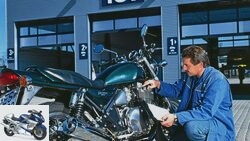
Modern Classic
Motorcycle conversion and tuning guide
Approval marks, entries, general operating permit
read more
Not for normal drivers
The cost of tuning is open at the top – what the talent or the current driving skills are not necessarily. It is therefore very important to start with the tuning where the next steps are possible for the driver – this also saves money.
“We can easily provide the customer with a BMW with 230 hp, less than 180 kg and a World Cup chassis,” Jens Hainbach also takes up this important point. “But most of them are slower with that than with their production S 1000 RR, because racing motorcycles like this are made for extreme areas and require an appropriate driver. It is therefore more difficult for normal riders to move such a motorcycle quickly. ”Hainbach and Krekeler recommend proceeding very pragmatically.
“Invest money in smart tires”
“Before I think about engine tuning or weight savings, it makes more sense to invest money in smart tires,” Krekeler starts at the very beginning. “I can only shake my head when I see how much money people have invested in add-on parts, exhaust systems or paintwork, but the engine has the cheapest oil in it.” If you don’t care for your motorcycle, you won’t enjoy adjustable footrests or power for long Commander have, and a lack of care, for example on the brakes, even torpedoed the best tuning with racing pads, discs, etc..
Anyone who has decided to permanently drive their motorcycle on the racetrack does not have to worry about ABE and TuV. After the compulsory part of adapting his racing car for use on the slopes, the increased risk of falling should also be taken into account. It is therefore advisable to purchase a racing fairing as the first tuning step. It is considerably cheaper than the standard plastic, lighter and also much easier to assemble due to the design. If you can and want to invest further at this point, you may find foldable or shorter racing levers for the clutch and brake.
The experts generally see the greatest potential in the chassis. “Even on the road, standard chassis doesn’t always suit the driver and his driving style. That’s why the end of the flagpole is quickly reached on the racetrack, ”says Michael Lohmann from MCT-Lohmann, who as a Kawasaki expert has had racing on his side for many years and as a member of the board of the Association of German Motorcycle Tuners e. V. (VDMT) makes strong for the correct work of the scene.
Electronics is a tuning story of its own
In addition to a specialist for advice and installation, a tuned chassis also requires the willingness of the driver to take on this complex topic. If the rider’s weight with equipment does not correspond to the usual reference size of around 80 to 90 kilograms with which the manufacturers operate, even minor revisions to the spring rates help. This is particularly interesting for road drivers. Often the manufacturer’s philosophy with the series chassis and its setup does not suit the taste of the driver, which is why a visit to a specialist can help to find the right compromise between comfort and hardness.
At the latest, during regular laps on different racetracks with real racing tires through to slicks in different mixtures, you cannot avoid concentrating the chassis on the track layout, asphalt temperature and the desired line. Time is right here – that’s why a functioning, fully adjustable chassis is definitely the most sensible investment in your own motorcycle.
“Now that the motorcycle has met all the requirements for the racetrack and the chassis has been made, the electronics are now a completely separate tuning story,” says Lohmann. “In addition to the pure functionality, in which an accessory exhaust is matched to the motorcycle using the Power Commander, for example, there are nice-to-have things such as automatic gearshift, retrofit traction control and others.” Built in series, very often in the manufacturer’s range of accessories and therefore compatible with the bike without any problems and they work accordingly well. The control units are prepared and matched to these accessories, which makes things even easier.
Motor tuning comes at the very end
The topic of engine tuning comes at the very end and is something by professionals for very fast drivers. If you can’t get under 1:40 min with a series 1000 in Oschersleben, you won’t be able to do that with engine tuning. “We are talking about over 180 production horsepower for superbikes today,” warns Jens Hainbach. “It takes experienced pilots to go a little further with engine tuning.” Before the major and therefore very expensive intervention, a corresponding racing exhaust is actually recommended for many models in order to optimize the torque curve, for example. “The Yamaha R6 is a good example of this,” explains Frank Krekeler. “The motorcycle is so speed-oriented that it hardly makes sense on the road anyway. But even on the racetrack, the great character is problematic, even for very good drivers. They miss a little more punch even below 10,000 rpm. We have had very good experiences with Akrapovic and similar exhaust systems in order to get more torque in the four-digit range. “
Even after such a measure, there is still scope on the periphery before tuners balance crankshafts and machine cylinder heads. So-called kit parts deliver perfectly “tuned” components for the respective motorcycle, which extend via the ECU and the appropriate wiring harness to intake trumpets and camshafts. Compared to the series ECU, the kit counterpart allows direct interventions in the mapping, which can also be carried out much more precisely. With the kit ECU, exhaust and air filter, you can get the unpleasant rough throttle response under control and iron out performance holes at certain speeds. Kit parts usually come directly from the vehicle manufacturer, such as the racing kit of the BMW HP4, or from specialists who are closely connected to certain models – such as Jens Hainbach’s Alpha Racing or MCT Lohmann, who then combine such kit parts with others Upgrade tuning measures to expanded kits and then get down to business.
It’s about tenths or hundredths
Well-balanced pistons, finely balanced crankshafts, flow-optimized channels, etc. are then the praises of tuning. Now it’s about the last horsepower, the perfect engine run and possibly also about the durability of the engine. Because the quieter an engine runs, and the more disturbing vibrations and imbalances can be eliminated by such measures, the better the engine “runs” and correspondingly less wears.
At PS we can marvel at and experience every year at TunerGP what effort tuners put into this stage and how huge the differences are. And often enough, even with the tuning steps listed, the end of the tuning flagpole is not reached, gearboxes are further optimized, the geometry and rigidity of the frame are interfered with and even the smallest screws are hollowed out for every gram of weight savings. “This is high-end for just one purpose: to get every imaginable tenths or hundredths advantage for the driver over an equal opponent. Whether this is why it is more fun to ride this motorcycle instead of a near-series machine is a completely different question, ”Jens Hainbach added. Which inevitably leads back to the initial question before each tuning step. What is my problem and how can I change it? Regardless of where you drive, if you can say in the end, problem recognized, evil averted, that was successful tuning – or better, optimization. Everything else is window dressing.
If you take a pragmatic approach to tuning and deal honestly with your own skills, you can easily find out whether you are at the right address with the respective tuner. If you are advised to do tons of add-on parts, chassis and engine tuning without a detailed discussion, you should be skeptical. A good tuner first and foremost listens and asks questions about driving behavior, lap times, etc. It never hurts to take the time to talk to different tuners and finally to choose the one who can trust the rider and bike with each step.
Subscribe to MOTORCYCLE videos on Youtube
Tips on brakes, exhaust, oil and tires
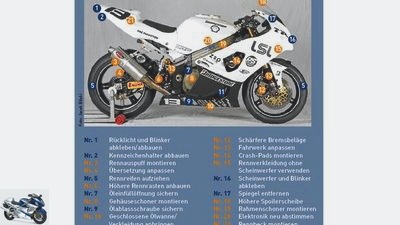
Bilski, PS
If you want to drive your own motorcycle on a racetrack, you have to prepare it for it. Certain security-relevant changes are mandatory and marked in blue in the picture. The list of other possible modifications (orange) is almost endless.
Brakes
There are many wearing parts in a brake system. First and foremost, these are the pads, brake fluid and the discs. The wear and tear on the linings causes dust that is deposited all over the calipers, hindering the movement of the brake pistons and thus changing the pressure point. In addition, the standard pistons are usually made of aluminum – they get hot faster, expand and no longer return cleanly. Here, too, there is usually an indefinable pressure point
Consequence. Steel pistons with alloy are then an effective and inexpensive means,
before whole saddles are exchanged.
Exhaust
If the bulky standard exhaust torpedoes the face of your bike and if you look at an accessory, you face two problems: noise regulations and emission standards. Those who violate it on public roads now risk hefty fines. In addition, the most beautiful pipes often ruin engine performance. Super chic short silencers like the one in the picture above often eat up a lot of series performance. In terms of volume, it usually looks even better on the racetrack. Basically, racing systems are only useful if they are
be properly coordinated.
oil
High-quality oils that are changed regularly not only ensure the longevity of an engine in general. Anyone who is sporty, demands a lot from their drive and even squeezes it out properly on the racetrack, should invest in the right oil before adventurous tuning measures. Highly viscous, i.e. significantly more liquid oils, which is particularly true of racing oils, are advantageous at high temperatures. Usually these are fully synthetic oils. They are even said to tease out one or the other horsepower from sports engines.
tire
In PS 5/2014 we devoted a large special topic to tires. That underlines how important tires are. That is why choosing the right rubbers is mandatory before every tuning step – on the road as well as on the racetrack. Often OE tires, as the skins applied by the manufacturer to new vehicles are called, are an inexpensive variant with special specifications that do not exactly contribute to good handling or even grip level. Simply changing the tires often works wonders. On the racetrack it is clear: who does that
Has exceeded the beginner level, needs racing tires.
Buy tuning parts at markt.motorradonline.de
Buy optic tuning parts on markt.motorradonline.de
Tuning development
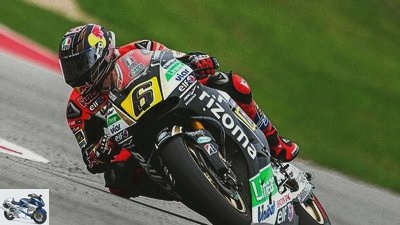
2snap
A passionate racing athlete himself, Julius Ilmberger also supports MotoGP star Stefan Bradl with his company. In addition to tangible results, there is also a lot of emotion in his commitment.
Racing is often denounced as senseless destruction of money. We asked well-known German tuning experts how important motorcycle racing is for development.
The fact that most of them are or have been enthusiastic motorsport enthusiasts themselves could be the most obvious explanation as to why their companies are so involved in motorcycle racing. But no successful company boss can afford to throw money out of the window out of personal enthusiasm. So why this motorsport commitment? Julius Ilmberger, Managing Director of Ilmberger Carbonparts, who build the fairing for Stefan Bradl in MotoGP, among others, insists on an emotional connection for his company despite all business acumen: “I’m a passionate motorcycle racer myself, and that’s where my company’s roots are – I can’t imagine it without this sport ”, says Ilmberger, who, like the add-on parts manufacturer Gerhard Gilles, went straight from a racing athlete who wanted to optimize his own motorcycle to an entrepreneur. “The experience from racing is invaluable for product development, because nowhere is the material and construction exposed to more severe stresses than in racing,” says Robert Schon from Gilles Tooling.
For Jochen Schmitz-Linkweiler, owner of LSL, who are particularly known for handlebars, footrests and other add-on parts, product development is particularly important on long journeys. “Two aspects are important to me in endurance as a development field: ergonomics and reliability – nowhere else does a driver have to endure this long on a motorcycle, and where else than in a 24-hour race can you test the durability of a product? “The first LSL handlebars for athlete customers resulted from this experience. “The clip-ons in the 1980s had an incredibly strong angle of inclination because they were developed for extremely slim two-stroke GP models,” says Schmitz-Linkweiler. “At that time, we developed our handlebars for series athletes on long-haul routes and then made this experience directly accessible to the customer.”
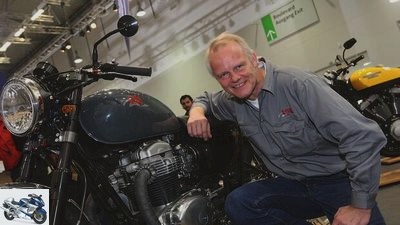
Jahn
Jochen Schmitz-Linkweiler (picture) sees the sense for his involvement in racing in the long distance in particular.
Ilmberger, who also sees the long-distance test area as the most uncompromising test area, attributes similar developments exclusively to racing experience – fairing parts in particular have to withstand extreme heat loads there. “The knowledge that we gain there can then be directly transferred to the durability and reliability of motorcycle carbon parts in large-scale civil road traffic,” says Ilmberger, describing the advantage of this development field. To do this, he invests around a third of the annual income in motorsport.
How much of this effort ends up with the customer is difficult for Schon to quantify. In most cases, regulations, constantly and often changing requirements by the teams and the series require such a high degree of flexibility in the manufacture of racing parts that Schon sees the benefit for the customer primarily indirectly: “The tough racing requirements force us to be highly innovative in design. This know-how ends up in all of our products. “
For that reason alone, the makers do not want to forego racing. This also applies to the chassis specialist Benny Wilbers: “The use of the race helps to understand the chassis technology in general, but after starting in the IDM with the active electronic chassis of the BMW HP4 we learned a lot. This is the future, and there is no better field of activity to drive development forward. ”The result is a new HP4 suspension racing kit for customers. And if somebody once again dismisses motorcycle racing as a pointless pastime, you should remind them of what they stand on, sit and drive on their bike.
Related articles
-
Schwab Sports & scene History of motorcycle tuning History of motorcycle tuning Tuners have never had it harder Content of About 50 years ago, motorcycle…
-
Triumph Street Triple – Series, Cup, Tuning
K motorcycles Triumph Street Triple – Series, Cup, Tuning Triumph Street Triple – Series, Cup, Tuning Family Day Content of Three sisters: they have a…
-
Tips and tricks for motorcycle care
Rolf Henniges counselor technology & future Tips and tricks for motorcycle care Tips and tricks for motorcycle care Breaking in a new engine is…
-
Tuning and restoration for BMW two-valve boxers
markus-jahn.com 25th pictures Stefan Wolf 1/25 BMW dealer Karl Maier (57). Jahn 2/25 Pressing: After a bath in liquid nitrogen, the valve guides are…
-
Driving tips: Warm up the motorcycle properly
jkuenstle.de counselor workshop Driving tips: Warm up the motorcycle properly This is how it works: Warm up the motorcycle properly How to get your bike…
-
Driving tips and advice on motorcycling
fact 26th pictures MOTORCYCLE 1/26 On the way on alpine passes? That’s how it works! MOTORCYCLE 2/26 Seductive winding curves with risk. The course of…
-
BMW S 1000 RR Tuning PS-Tune-Up
Andreas Feulner 36 pictures Andreas Feulner 1/36 Tuning measures for BMW S 1000 RR models up to 2016. Andreas Feulner 2/36 Tuning measures for BMW S 1000…
-
manufacturer 11 pictures manufacturer 1/11 Motorcycle accessories that make it quick: sports filters. Switching from the original to a normal replacement…
-
PS-TuneUp Triumph Daytona 675 race track tuning
Feulner 17th pictures Andreas Feulner 1/17 PS-TuneUp has set itself the task of forging a good racing athlete into a hot race track sweeper with the…
-
TuneUp 2.0 Tuning and Conversion Guide Honda Fireblade
Ines Mannl 17th pictures Ines Mannl 1/17 Don’t worry, it has to be that way! Even if this Honda is not ready to drive, it all serves a higher goal!…